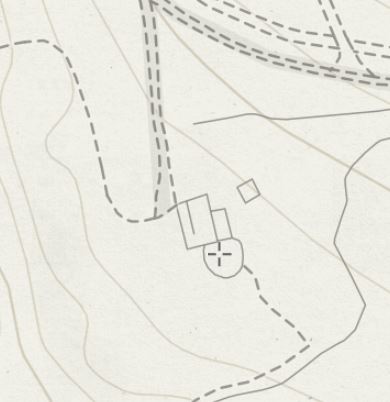
The resurrection of the ‘Views of South Caradon’ website now moves out of the Seaton Valley to the engine houses that lie on the southern slopes of Caradon Hill.
The Ruin of Rule’s Engine House
This engine house is a stark contrast to its nearby neighbor at Holman’s shaft. Whilst Holman’s massive house dominates the southern slopes of Caradon Hill, Rule’s has only one corner standing to full height, the remainder being no more than a pile of rubble.

A military exercise was the probable cause of the transformation of this Cornish engine house into collapsed ruins. It originally housed a 40″ engine (Kenneth Brown), which proved to be insufficient to pump the mine as it expanded eastwards, and therefore was supplemented by its larger neighbor. The engine at Rule’s was installed in 1863 as a result of the mine extending its workings eastwards, away from its original focus in the Seaton Valley. The engine was originally working at South Garras Mine, near Truro. Webb and Geach state that the engine was 60″.
Click here for a map of the Holman’s/Rule’s engine house complex>
Rule’s ruined condition makes it a challenge to determine its layout; its shaft was on the eastern side, and its boiler house to the north. These boilers may have shared a chimney with Holman’s shaft boilers.
![41f3tbQ+CnL._SL500_[1]](https://navsbooks.wordpress.com/wp-content/uploads/2018/03/41f3tbqcnl-_sl500_1.jpg?w=213&h=300) As seen on the Cover of the Trevithick Society’s re-print of ‘Webb and Geach’
As seen on the Cover of the Trevithick Society’s re-print of ‘Webb and Geach’
South Caradon’s Rule’s shaft engine house the ruins adorns the cover of ‘History and Progress of Mining in the Liskeard and Caradon District’.

 A quick break from the South Caradon series of posts to pass on some news about from across the Atlantic. Here is an update from Mark Connar on activity a the President Engine house, a house that had close connections with
A quick break from the South Caradon series of posts to pass on some news about from across the Atlantic. Here is an update from Mark Connar on activity a the President Engine house, a house that had close connections with 
 William West the Last Great Cornish Engineer
William West the Last Great Cornish Engineer





 A Victorian Map of the area
A Victorian Map of the area